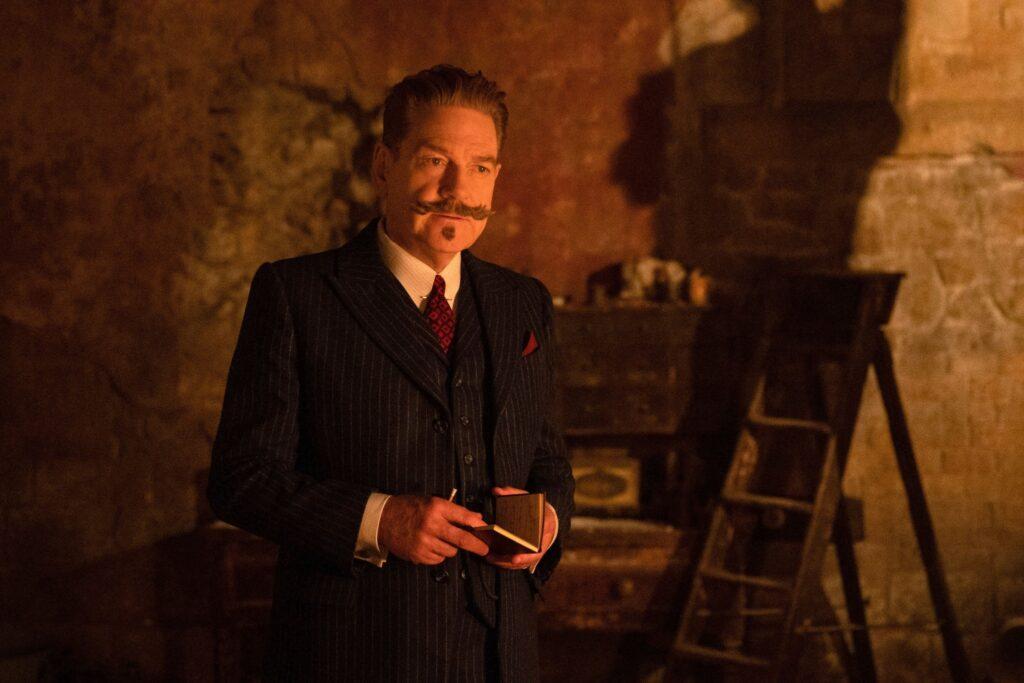★★★☆☆
The whodunit subgenre contains some of the most purely entertaining films to grace the screen — Rian Johnson’s meticulously crafted “Knives Out” duology comes to mind.
But after two humdrum flicks, 2017’s “Murder on the Orient Express” and 2022’s “Death on the Nile,” were met with lukewarm reviews and mediocre box office returns, it appeared Kenneth Branagh’s adaptations of Agatha Christie novels featuring detective Hercule Poirot were never going to be among the finer whodunit films … or so we thought.
Though it still falls prey to the same screenplay deficiencies and lack of ambition that plagued its predecessors, “A Haunting in Venice” offers an entertainingly spooky new angle for Branagh’s saga, suggesting the middling mystery franchise may have some life left in it.
“A Haunting in Venice,” released Sept. 15, finds Poirot (played by Branagh, who also returns to the director’s chair) in retirement and self-imposed solitude in Italy. Poirot is soon coaxed out of his idyllic abode by mystery writer Ariadne Oliver (Tina Fey), who convinces him to accompany her to a Halloween seance at an ancient palazzo with a disturbing past.
When the seance is interrupted by a gruesome murder and the house comes alive with eerie, seemingly unexplainable happenings, Poirot is forced to ferret out another killer while his disbelief in the supernatural begins to waver.
In the film’s opening scene, the audience views the picturesque waterways and ornate architecture of Venice through a stately lens typical of Branagh’s direction, until the serene scenery is tainted by the film’s first onscreen death. A flock of pigeons settles on the ground, then suddenly erupts into a flapping frenzy as a seagull unexpectedly snatches and kills one of the pigeons.
In just a few seconds, “A Haunting in Venice” deviates from the tidy, polished aesthetic and downbeat tone of its forerunners and introduces its freshest, most exciting quality: macabre imagery. The film oozes with gothic thrills that Branaugh achieves through the clever use of shadows in combination with creepy costume designs, an eerily beautiful “haunted house” setting filled with darkened corridors and a surprising willingness to display brutal violence.
The film’s sound design also adds to the spooky ambiance. The recurring use of distant singing, seemingly emitted from the voice of an unseen child — an unsettling noise that only ever appears during moments of nearly complete silence — builds tension by injecting the film (and, alarmingly, its previously level-headed protagonist) with a sense of dread.
When Poirot begins to fear the shadows, viewers who rely on his grounded pragmatism and skepticism toward the supernatural to shield them from the eerie onscreen occurrences are suddenly pulled into a new fear-filled world where anything is possible and no one is safe.
That palpable foreboding would not be nearly as potent if not for a handful of committed performances from the film’s talented cast. Branagh continues to shine as Poirot, this time using facial tics and trembling hands to evince the character’s vulnerabilities and burgeoning fear.
Alongside Branagh, Michelle Yeoh, despite her limited screen time, continues to impress as she toes the line between expressing both alarming eccentricities and an unexpectedly soft-spoken demeanor. Jamie Dornan also delivers an unexpectedly moving performance as a PTSD-stricken doctor, allowing his character’s unusual but love-filled relationship with his precocious young son (Jude Hill) to become the heart of the movie.
Unfortunately, the film’s admirable performances are consistently undercut by a cliche-filled script. Characters tend to use stereotypical lines of dialogue to describe their situations, leading to moments that feel both predictable and forced, especially towards the end of the film.
Though the film tries to shed the rigid, landscape-obsessed cinematography that permeated its two forebears, not every attempt at uniqueness pays off. The repeated use of wonky, sharply slanted camera angles becomes increasingly distracting and ultimately weakens the visual flair afforded by the film’s grisly kills and immersive, atmospheric set and costume design.
Because of those shortcomings, “A Haunting in Venice” does not reach the heights of whodunit paragons like “Knives Out,” but its tonal divergence from “Murder on the Orient Express” and “Death on the Nile” suggests a step in the right direction for the franchise. If Branagh ever moves forward with further adaptations, one can only hope that he continues to experiment with varied aesthetics, tones and ideas — lest the franchise fade into the pages of cinematic history like an elusive ghost.














